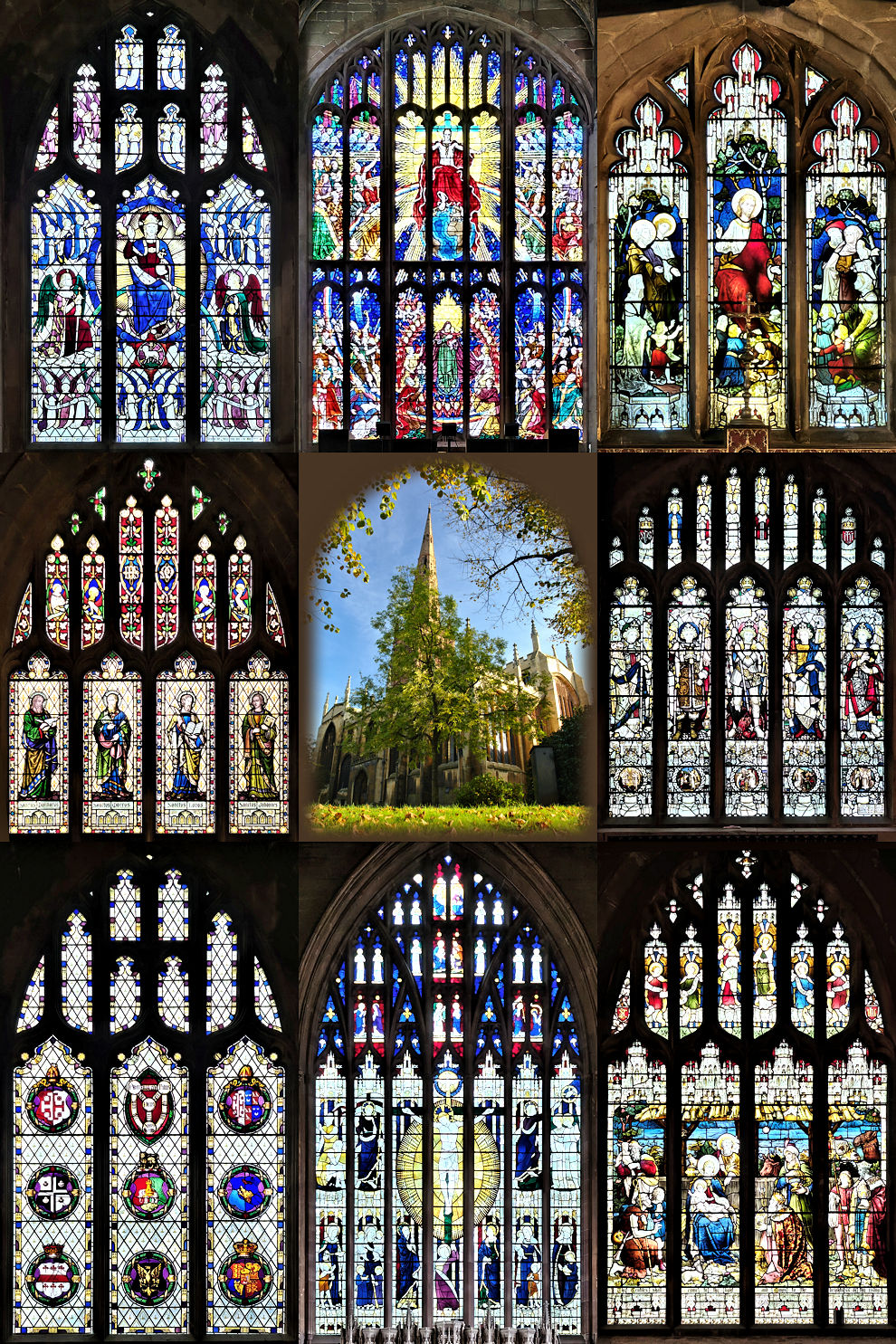|
Index...
|

 his first view of Holy Trinity Church was taken by our son, Steven, when he was only 8 years old. We are looking from Broadgate, with the Cathedral Lanes shopping centre just visible to the right, and the spire of the old cathedral in the background.
his first view of Holy Trinity Church was taken by our son, Steven, when he was only 8 years old. We are looking from Broadgate, with the Cathedral Lanes shopping centre just visible to the right, and the spire of the old cathedral in the background.

This church was one of the few buildings of stature that escaped destruction during the bombing raids of the second world war. It was not simply a lucky escape, however.... the vicar, Canon Graham Clitheroe, and a team of dedicated fire-fighters bravely averted the danger from the falling incendiaries during the heaviest raid on November 14th 1940.
On entering Holy Trinity, it becomes apparent that much attention has been paid to detail in every direction. It is an extremely ornate building, well lit through a multitude of large windows, and has many features of interest, one such example being the pulpit, seen in the photograph on the right, which was built around 1470 and is one of the highest in the country.
Not quite so old is the Marler Chapel (below, and also sometimes referred to as the Mercer's Chapel) which was added on to the main structure around 1526/7. The east window behind the altar (left hand photo) is a much more recent addition and was a 1956 replacement for the original which was blown out in the Second World War.


Until early in 2019 you could find at the south east corner of the church a replica of the ancient Coventry Cross which had stood in Cross Cheaping from 1544 until the 1770s. It has since been removed and been reconstructed not very far from its original location.
Built between the 1200s and 1400s out of red sandstone, Holy Trinity church would originally have more closely resembled the appearance of nearby St. Michael's. However, several major restorations have seen much of the original brickwork replaced with a paler coloured sandstone.
The current spire is also much younger than the rest of the church. It is 237 feet high and was erected in 1667 to replace an older one that collapsed in 1665 during a storm, sadly killing a young boy.
The present building replaced a much older chapel built on the site by Monks from St. Mary's Priory and was first mentioned in 1113.
Although a fine looking piece of architecture, as with any church not all aspects can be fully appreciated from the outside. Stained glass windows are a typical example and it's not until you enter the church that the full colour and artistry can be enjoyed; none more so than the great west window of Trinity church, glazed by Hugh Easton in 1955, and featuring top-centre in the montage below. In the first photo on the left above, this is the window you see above the main entrance. Meanwhile, I hope you enjoy this little selection of stained glass images:

Aerial views of this church showing the changing scene from pre-First World War to modern day can be seen on my Now and Then pages.
On Saturday 11th September 2004 one of the most eagerly awaiting unveilings of recent years was finally made at Holy Trinity church.
Dated to the 1430s, this "Last Judgement" style of image, known by many as the "Apocalypse painting", was only kept on view for around a century, before becoming victim to King Henry VIII's reformation. Many images, statues, shrines and other forms of decoration in churches were considered to be frivolous, and as a result of this, the medieval mural in Holy Trinity Church was white-washed over some time shortly after Henry's reign.
More liberated times were to come, and in 1831, artist David Gee restored the painting and gave it a varnish coating to "preserve" it! The bitumen contained in the varnish soon caused it to darken, and half a century later the painting had once again virtually disappeared from sight.
In 1995, discussions were held to find the best way to reveal and preserve the ancient painting. In 2002, work was underway and two years later the public can enjoy the work originally done by Coventry's medieval artists 50 years before Leonardo da Vinci painted the Last Supper.
As can be seen from the enlarged shot below, the amount of colour and detail still visible in this mural of nearly 600 years old, is extraordinary, especially if one considers that it has twice been covered over and revealed.

Holy Trinity church has two dedicated websites and they both contain a wealth of information about this Doom painting. If you wish to learn more, please try these links: - Sarah and Andrew's very informative "Take a Pew" website or the Official Holy Trinity church website.
Website by Rob Orland © 2002 to 2025